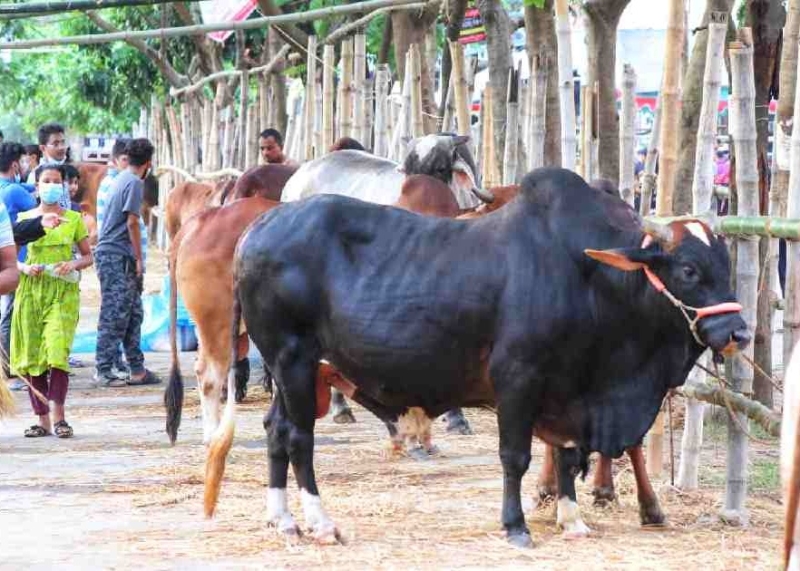- High medicine prices threaten healthcare of poor communities |
- Curtain falls on a political giant as Khaleda Zia passes into history |
- BNP Expels Nine Leaders Over Defiance and Poll Bids |
- India, Pakistan FMs to Attend Khaleda Zia’s Funeral |
- Global Leaders Pay Tribute as Condolences Pour In for Khaleda Zia |
Artificial fattening harmful to both cattle, consumers: BAU expert

Sacrificial cattle on sale at a market in Capital Dhaka.
As Eid-ul-Azha approaches, many cattle are subjected to harsh, painful, and unnatural treatments by traders hoping to make a quick profit, causing significant suffering for the animals and posing serious health risks to consumers.
Dr. Kazi Rafiqul Islam, a professor in the Department of Pharmacology at Bangladesh Agricultural University (BAU), discussed the alarming rise in this practice and provided tips to identifying artificially fattened cows.
"These practices cause immense distress to the animals and can lead to health problems for humans who consume their meat," he said.
According to Dr. Islam, drugs, as well as steroid injections, are commonly used to fatten cows. Additionally, hormones are administered to achieve rapid weight gain.
As a result, these cows exhibit symptoms such as breathing difficulties, constant fatigue, and a bloated appearance due to water retention. Pressing a finger on their body leaves a lasting indentation, and their body temperature is abnormally high. They often lose their appetite and do not chew cud regularly, Dr Islam said in his speech.
Their noses will be dry, and they will prefer to stay in one spot because the treatment makes it hard for them to walk. Their bones become fragile and prone to injury if they fall.
Dr. Islam warns that eating meat from these artificially fattened cows can lead to water retention, weakened immune systems, and various urinary and liver problems in humans.
A healthy cow can be identified by its shiny coat, thick hump, tight skin, and reactive response when touched, he said.
The upper part of a healthy cow's nose will be moist or slightly sweaty.
"Healthy cows will show eagerness to eat when food is presented, and their body temperature will be normal," he said.
He also mentioned that while a healthy cow’s body temperature might rise after a long walk to the market, it should return to normal within one to two hours. - UNB

